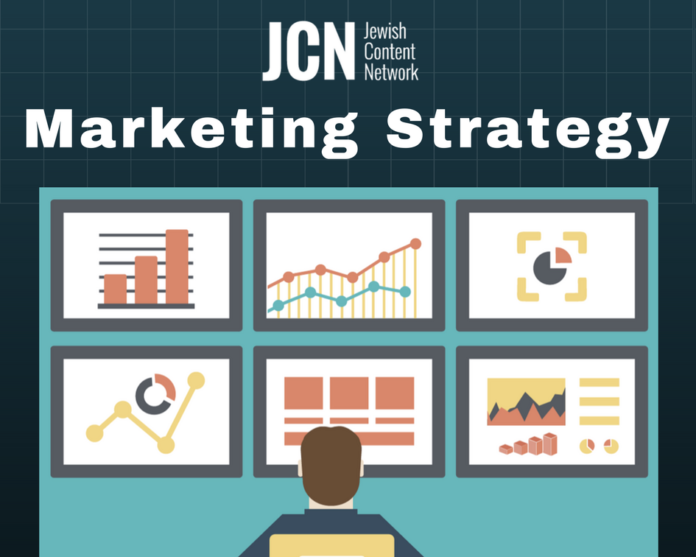The following article is part of a new series presented by Jewish Content Network which will discuss business ideas, marketing advice, and feature new business technologies, in an effort to help small business and organizations thrive and succeed.
For all the budget and time it takes to advertise – and the potential results it can produce for a business – it’s surprising how little time businesses actually spend planning their marketing campaigns.
Planning can make or break a campaign, and make the difference between blowing money into the wind and harnessing your funds to make a real impact on your bottom line.
Many people rely on their ad publisher to plan their campaigns for them. And while it helps to have someone who is familiar with specific ad products to consult with, it’s far more effective to approach a publisher or ad platform with a general marketing plan in advance. No one knows your business needs as well as you do, and the more prepared you are, the better others will be able to serve you.
Here are a few key points to keep in mind to help you plan an effective marketing campaign.
Plan
The first step is to just devote the time to planning. It doesn’t have to take long. Even five minutes spent in planning can make a very tangible difference.
Don’t just do this in your head. Write it down. Many of these steps are actually the same for every campaign you’ll run, so consider making a template with all the moving parts that you simply duplicate for upcoming campaigns. We use Asana for our project management, and do just that whenever a new project comes up.
Define goals
Arguably the most important point of planning your campaign is deciding what you want it to achieve. Do you want to build awareness? Get actual sales? Donations? Grow your email list? There’s a lot of different things you can ask of the people who get exposed to your marketing efforts. What will it actually be?
For most businesses, just getting awareness is not a good use of your funds. You’re not Coca Cola. You’re best served using your funds to try to convert people into actual customers. If what you sell is expensive or complicated, capture their info and foster a relationship with them via phone or email.
But always ask yourself, what is the next concrete step I want my visitors to take? The more measurable you can make these goals, the better. Google Analytics can be extremely helpful here.
Prepare your funnel
Based on your goals, what is the best way to enable your potential customers to easily take the next step? Very often this is via a landing page, a simple page that gives them more information and allows them to submit their info or contact you directly.
We sometimes get clients who ask us to link to a PDF file. This is not an effective way to collect leads ore generate interest. It’s hard to read on mobile devices, and it necessitates a more complicated next step for users, which means some of them will give up before they’re successful.
Don’t give them a reason to give up. Using a platform like Unbounce or the Jewish Content Network’s landing page tool, make sure you offer a compelling reason for them to take their next step and make it easy for them to do so.
Select your touchpoints
Now that you know what your goals are and how those goals can be acted upon, only now is it time to decide how you’re going to reach people. Depending on what you’re selling, and what actions you want users to take, will influence what marketing channels you use.
It often takes multiple interactions with your brand before people take action, so you want to “touch” them with your marketing as often as you can. That’s why recurring advertising is more effective than a one-off campaign, even if the latter has a higher budget.
Similarly, it can be beneficial to be on as many platforms as possible, to maximize your exposure. You want a user to see you wherever they go. Some common ways to reach people include:
- Social media – people spend hours on it every day, so whether you’re posting to your own account or sponsoring a post on a different popular account, marketing yourself on social media can be very effective. Make an extra effort to be entertaining, engaging, or otherwise emotion-provoking. This type of content is the mostly likely to elicit responses from users. The Jewish Content Network allows for paid posts on many popular Jewish social media accounts.
- Email marketing – one of the most effective ways to advertise. As always, we recommend Mailchimp. They even have a great landing page creation tool if your goal is to grow your email list.
- Press releases – writing articles that combine helpful or newsworthy information with information that promotes your business, is a classic way to get more publicity. The more actually helpful your article is, and the more relationships you have with journalists, the more likely your article is to be published in the paper. We several options to advertise your articles on large Jewish websites.
- Print – particularly popular in the Jewish world, print will never go out of style because of Shabbat and Holidays. But the downside of print is it’s harder for users to take instant action, and therefore harder for you to measure the results of your campaign. Print advertising is often more expensive as well, because of the fixed costs associated with running your ads.
- Display ads – these are ads that appear online: on websites, apps, and even social media accounts. These ads can further be broken down by their style – are they Banners with just graphics? Are they just text, like Google Ad Words? Do they combine a picture with text in the form of Native Ads?
Each ad layout has its advantages and weaknesses, and online advertising as a whole can be said to be more affordable, more measurable, and often more effective. This, despite the fact that you are often competing with a more distracted audience and stiff competition from the ad right next to yours.
Align your messaging
At this point, you’re ready to define what the ads will say. Your goal is to be as consistent as possible across all platforms, making slight modifications if required by specific platforms. All the features of your offer may not fit on a social media post but do just fine in an article. A copywriter can help you articulate the right message while a graphic artist can visually express it in the right way for each medium.
When you’re ready, you also want to fire on all cylinders at once – send out the emails, post to social media, and enable your digital ads all the same time, for maximum impact.
Pulling it all together
As you can see, running a successful campaign entails more than just buying some ad space and throwing something together. But the additional time spent can pay itself back royally, with measurable, increased results.
 Chaim Chernoff is the Chief Marketing Officer at the Jewish Content Network. Always on the lookout for latest digital marketing trends, Chaim aims to help businesses expand their presence and grow their business in the digital world. Do you have marketing questions? Send an email to: [email protected], or chat with us!
Chaim Chernoff is the Chief Marketing Officer at the Jewish Content Network. Always on the lookout for latest digital marketing trends, Chaim aims to help businesses expand their presence and grow their business in the digital world. Do you have marketing questions? Send an email to: [email protected], or chat with us!











